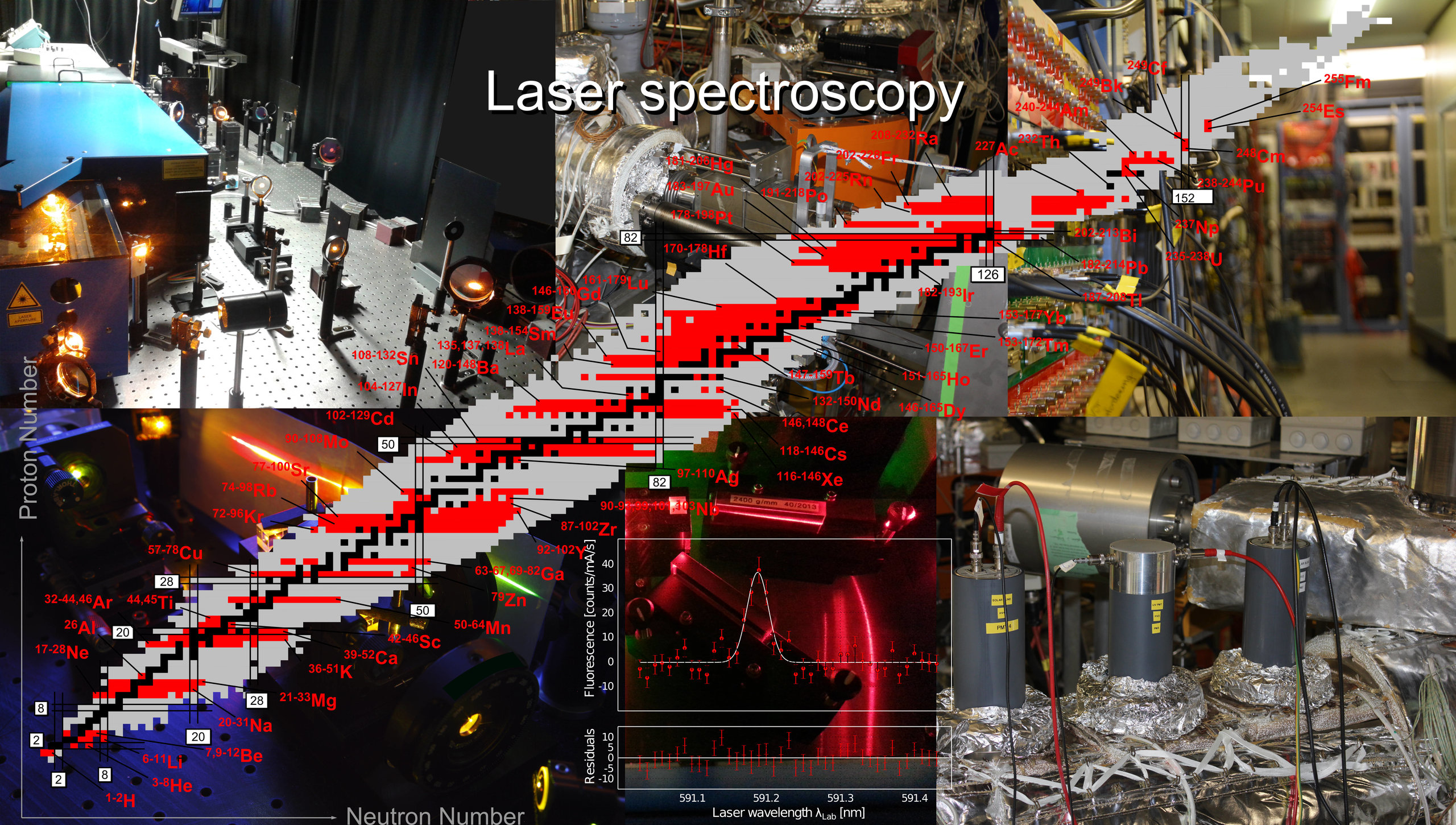Laser spectroscopy in storage rings

We are involved with experiments at the storage rings at FAIR, mainly at the ESR, CRYRING at HESR where highly charged ions are stored at high-speed. We study them using a technique known as co-linear laser spectroscopy. This can be done either in a counter- or co-propagating configuration. The speed of the ions and the laser wavelength are chosen to fulfill the relativistic Doppler Effect such that the laser light comes in resonance with the transition under investigation in the reference frame of the ions.
This kind of high precision spectroscopy enables us to investigate fundamental process and symmetries. Especially we are interested in hydrogen-like, helium-like or lithium-like ions because their atomic structure can be calculated with high precision. Therefore these ions represent a perfect tool to study relativistic, QED and nuclear effects.
At the ESR laser spectroscopy has been performed since the early times of its operation. Within the last two decades laser spectroscopy of forbidden hyperfine (M1) transitions of the ground state hyperfine structure in hydrogen-like ions was successfully carried [1] [2]. In 2011 we finally succeeded to measure directly the hyperfine structure in lithium-like bismuth (209Bi80+) [3]. Furthermore a re-measurement of these forbidden transition are providing now new insights of QED effects in heavy highly charged ions [4] [5]. In order to confirm this discovery we are planning to extend this kind of measurements to the isotopes of bismuth: 207,208Bi.
At CRYRING, which is presently under commissioning, we plan to start the laser spectroscopy experiments using first single charged ions [6]. Here we are interested in the investigation of laser-induced polarization of ions by using optical pumping as well as development of a new detection technique, where we want to study the laser-assisted dielectronic recombination. These investigations can afterwards be extended to systems with higher charge state as they are going to be stored at the ESR for example.
At HESR, ions will be stored at much higher energies, which correspond to velocities very close the speed of light. By coupling the laser beam against the direction of the ions higher photon energies are achieved in the reference frame of the ions, therefore allowed dipole electric (E1) transitions in lithium-like ions will become into reach. For example, at the maximum energy of the HESR (ß=0.982) the D1 (2s1/2 – 2p1/2) transition in lithium-like Cu at 55 eV could be already reached with laser light at 227 nm (5.5 eV). In the future, even laser spectroscopy in lithium-like U will become possible by employing a new, table top, XUV laser source.
In order to be able to use these new possibilities, the infrastructure which allows the laser spectroscopy at the new storage rings have to be developed. We are currently involved in this task which includes production of laser beams, laser transport as well as detector and DAQ developments.
References / Selected Publications
# | Title | Author | Reference |
1 | Precision Laser Spectroscopy of the Ground State Hyperfine Splitting of Hydrogenlike 209Bi82+ | I. Klaft et. al. | |
2 | Ground State Hyperfine Splitting of Hydrogenlike 207Pb81+ by Laser Excitation of a Bunched Ion Beam in the GSI Experimental Storage Ring | P. Seelig et. al. | |
3 | Observation of the hyperfine transition in lithium-like bismuth 209Bi80+ : Towards a test of QED in strong magnetic fields | M. Lochmann et. al. | |
4 | An improved value for the hyperfine splitting of hydrogen-like 209Bi82+ | J. Ullmann et. al. | |
5 | High precision hyperfine measurements in Bismuth challenge bound-state strong-field QED | J. Ullmann et al. | |
6 | Physics book: CRYRING@ESR | M. Lestinsky et. al. |






